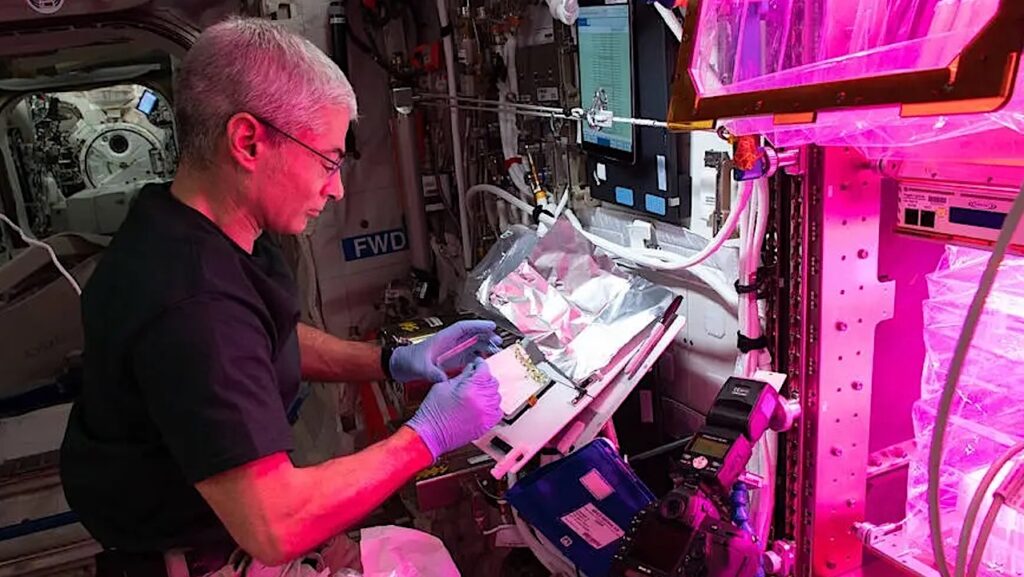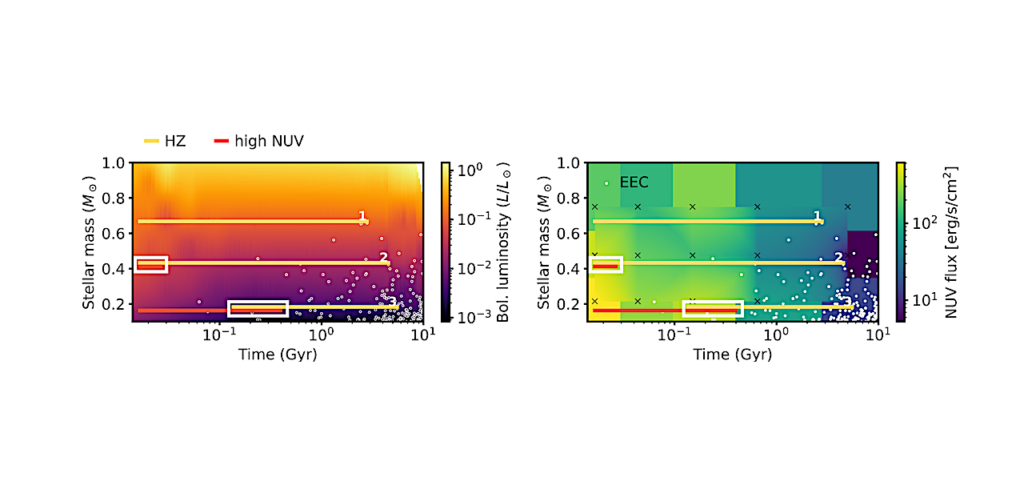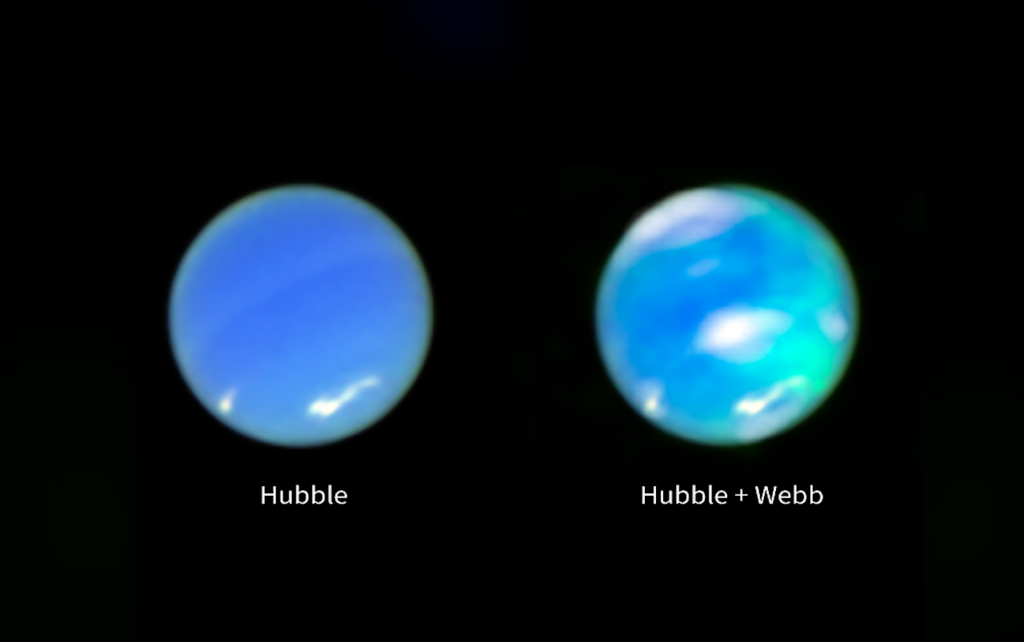Lower-than-expected Flare Temperatures For TRAPPIST-1

Although high energetic radiation from flares is a potential threat to exoplanet atmospheres and may lead to surface sterilization, it might also provide the extra energy for low-mass stars needed to trigger and sustain prebiotic chemistry.
We investigate two flares on TRAPPIST-1, an ultra-cool dwarf star that hosts seven exoplanets of which three lie within its habitable zone. The flares are detected in all four passbands of the MuSCAT2 allowing a determination of their temperatures and bolometric energies.
We analyzed the light curves of the MuSCAT1 and MuSCAT2 instruments obtained between 2016 and 2021 in g,r,i,zs-filters. We conducted an automated flare search and visually confirmed possible flare events. We studied the temperature evolution, the global temperature, and the peak temperature of both flares. For the first time we infer effective black body temperatures of flares that occurred on TRAPPIST-1.
The black body temperatures for the two TRAPPIST-1 flares derived from the SED are consistent with TSED=7940+430−390K and TSED=6030+300−270K. The flare black body temperatures at the peak are also calculated from the peak SED yielding TSEDp=136201520−1220K and TSEDp=8290+660−550K. We show that for the ultra-cool M-dwarf TRAPPIST-1 the flare black body temperatures associated with the total continuum emission are lower and not consistent with the usually adopted assumption of 9000-10000 K.
This could imply different and faster cooling mechanisms. Further multi-color observations are needed to investigate whether or not our observations are a general characteristic of ultra-cool M-dwarfs. This would have significant implications for the habitability of exoplanets around these stars because the UV surface flux is likely to be overestimated by the models with higher flare temperatures.
A. J. Maas, E. Ilin, M. Oshagh, E. Pallé, H. Parviainen, K. Molaverdikhani, A. Quirrenbach, E. Esparza-Borges, F. Murgas, V. J. S. Béjar, N. Narita, A. Fukui, C.-L. Lin, M. Mori, P. Klagyivik
Comments: 17 pages, 11 figures, 2 tables, accepted for publication in A&A
Subjects: Solar and Stellar Astrophysics (astro-ph.SR); Earth and Planetary Astrophysics (astro-ph.EP)
Cite as: arXiv:2210.11103 [astro-ph.SR] (or arXiv:2210.11103v1 [astro-ph.SR] for this version)
Submission history
From: Aaron Jeremia Maas
[v1] Thu, 20 Oct 2022 08:55:47 UTC (1,974 KB)
https://arxiv.org/abs/2210.11103
Astrobiology








